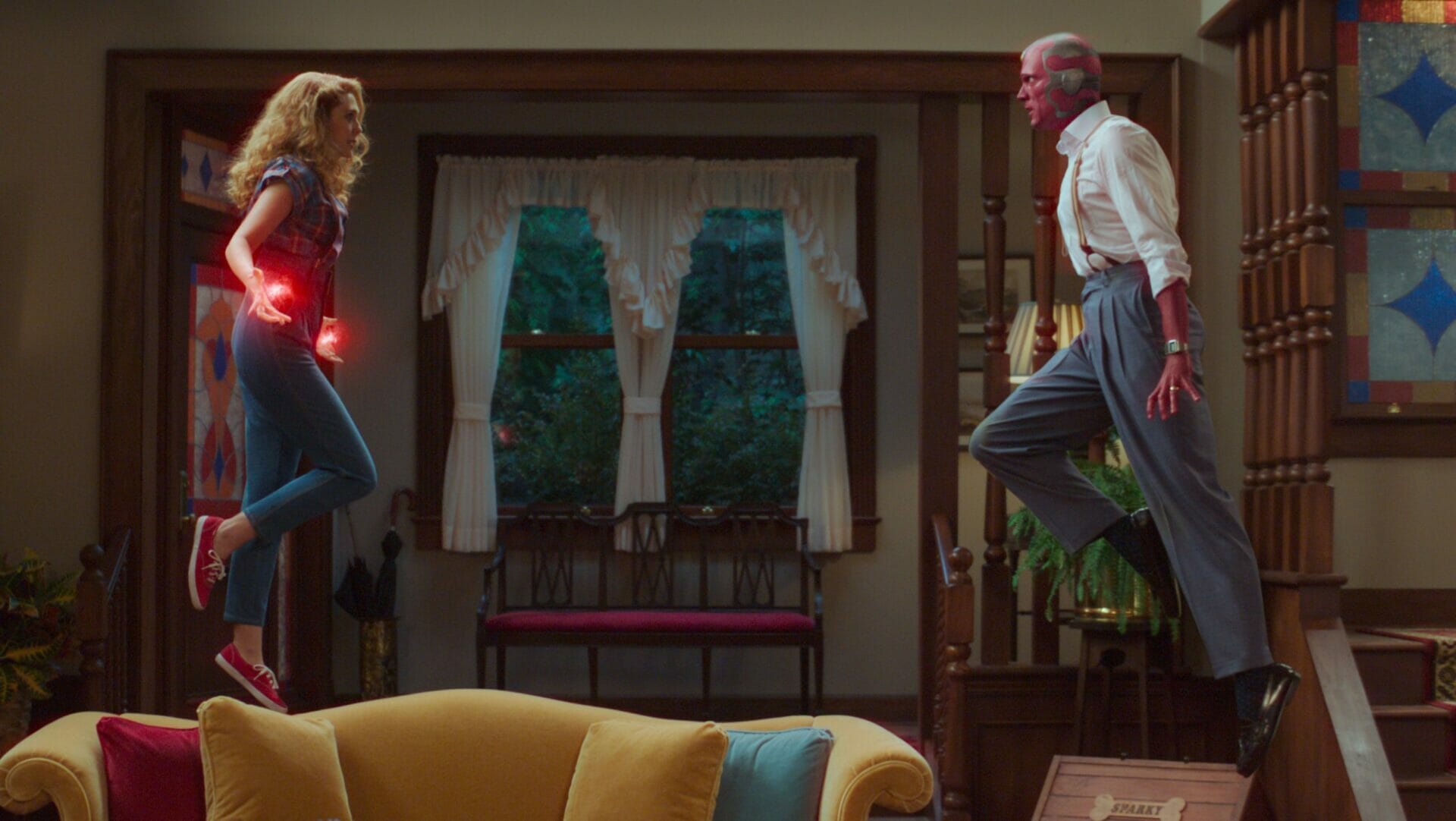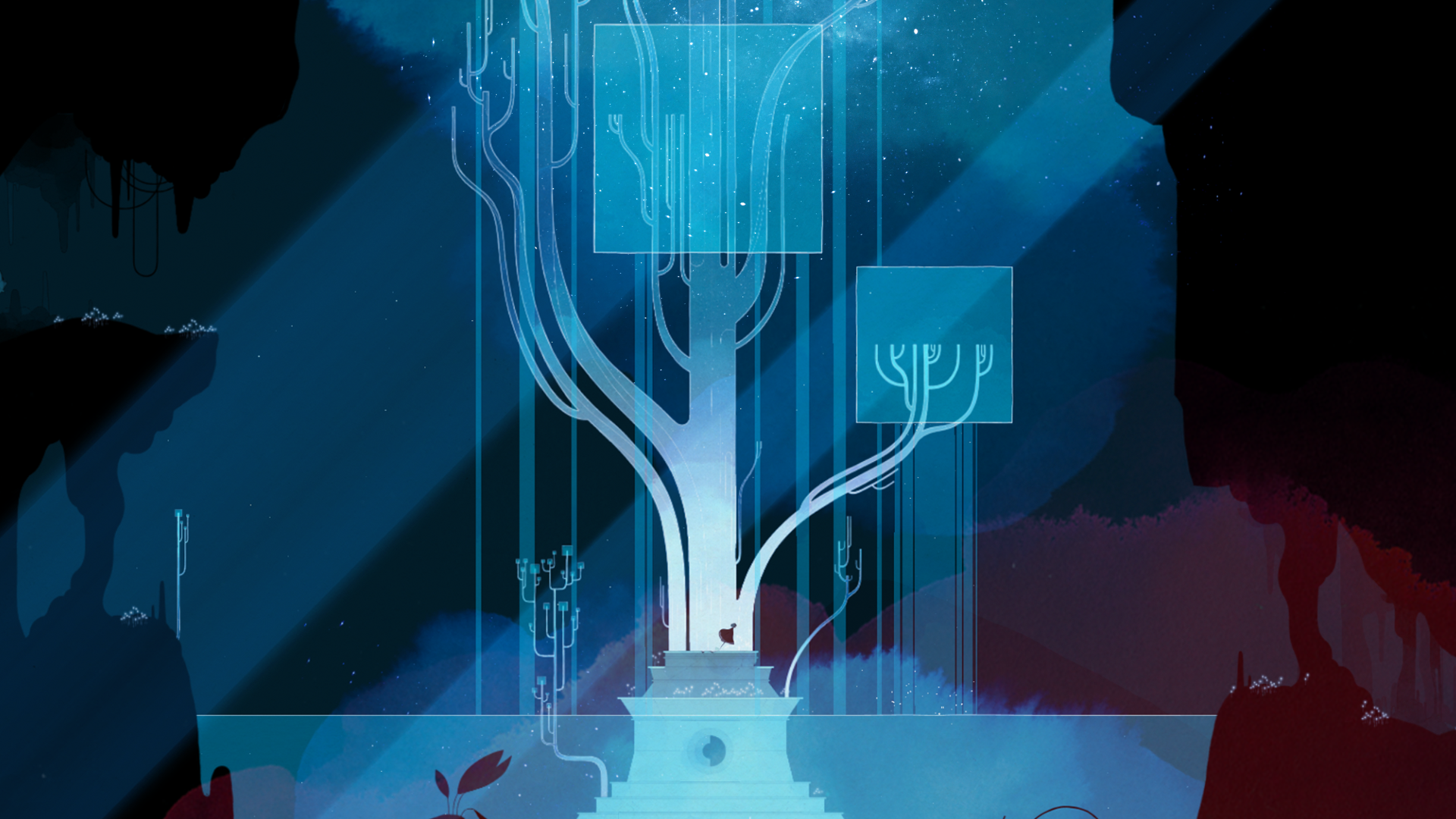
WandaVision | The ultimate coping mechanism
Creator
Showrunner
Director
Year
Country
Seasons
Runtime
Genre
By
WandaVision is a 2021 TV show created by Jac Schaeffer for Disney+. It is part of the Marvel Cinematic Universe (MCU) and the first Marvel show linked to previous movies of the franchise.
The story is set immediately after the events of Avengers: Endgame. Wanda Maximoff (Elizabeth Olsen), after Vision’s (Paul Bettany) death, finds herself living in the small town of Westview, happy and content. Together with Vision.
The two try to keep their powers hidden within the community. Obviously, things are too strange to be what they seem. So that the anti-terrorist agency S.W.O.R.D. begins to investigate. They ask for Monica Rambeau’s (Teyonah Parris) help, who has just returned from a five-year disappearance (also called ‘blip’), caused by Thanos.
Performance and story depth
The acting performances of Elizabeth Olsen (Wanda) and Paul Bettany (Vision), as well as Kathryn Hahn in the role of the meddlesome neighbor Agnes are definitely a real plus for the show.
The actors were able to highlight, through dramatic action, Wanda and Vision’s relationship, which had always been described in to real depth, and somewhat taken for granted in the movies. This could be one of the reasons why the show captured so much attention. Critics have really given a thumbs-up to WandaVision, so much that it received numerous and important nominations at the next Emmy Awards.
Is this a… sitcom?
The individual and defining nature of the show is its structure. The set of the story, a the beginning, looks like that of a sitcom. Then, as the episodes progress, it changes and becomes more and more modern. We go from black and white to technicolor, traveling through different styles of comedy – even with the iconic 90s recorded laughter.
The authors of WandaVision drew inspiration from existing post-war series, such as I Love Lucy, Leave It to Beaver, and, in particular, The Dick Van Dyke Show. Then, they moved to the Sixties and Seventies style of Bewitched, and then on to the more modern Keaton House, Malcolm in The Middle, Modern Family.
In the second part of the show the register changes, and we get deeper into the classic superhero action. However, the whole idea was a winning novelty within the MCU, other than just an original way of keeping the main theme of the story linked throughout the episodes.
The five stages of mourning
Actually, Schaeffer’s original idea, as she explained, was precisely to structure the show this way. She envisioned it as the manifestation of the five stages of mourning that Wanda must deal with after the death of Vision. The result might not be so accurate, but the theme is still clear: overcoming the pain, accepting it, making it your own, and moving on.
After all, as Vision iconically says in the finale, “What is pain, if not persevering love?”.
In the writers’ room, we had intense conversations about grief and loss. We had a grief counselor come and speak to us. My initial pitch, the structure of the show was mapped to the stages of grief. I did not know that that line would be a sensation, but it did feel at the time that it was the perfect distillation of the show.
So I came up with a line that was something along the lines of, “What is grief but love surviving?” We agreed that wasn’t quite it and we were turning it over and trying to figure it out. My incredibly talented assistant, Laura Monti, came up with the word “persevering.” We all believe that the line was born of the enormous amount of collaboration and unity on the show. So many talented women, specifically, came up with it.
(Jac Schaeffer)
A show that didn’t make everyone happy
WandaVision‘s particular narrative structure allowed the construction of a world in which the viewer can feel immersed. A slow-burn that allows the viewers to ask themselves numerous questions. The sense of waiting is even more relevant when there is something mysterious to discover.
In addition, the authors had fun inserting surprise developments here and there. In the form of images or clues that could lead to possible situations, even the introduction of new characters that would have thrilled the audience. Except for the fact that, in the end, the answers came in a hurry and the final transformation arc of the characters was accelerated.
In the end, WandaVision has its flaws and its merits. It lacks coherence in some parts, but its structure and intentions are fresh, innovative and significant.
Tag
Buy a ☕ for Hypercritic








